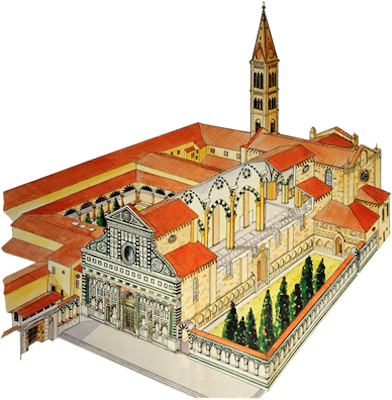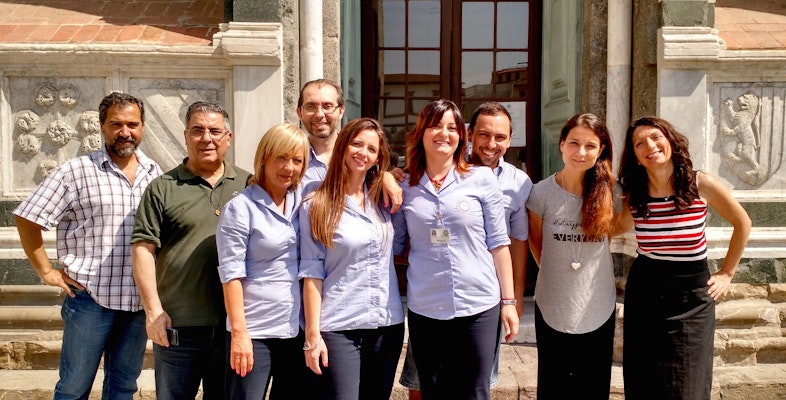A BIT OF HISTORY
Basilica of Santa Maria Novella was founded by the monks of Dominican Order in the first half of the thirteenth century, becoming one of the most important points of religious and artistic interest in Italy. The celebrity of Santa Maria Novella during the Middle Ages and Renaissance period attracted important artists such as Giotto, Brunelleschi, Masaccio, Michelangelo, Ghirlandaio, Botticelli and Vasari (just name a few), who realized beautiful artworks inside the complex.
This particular artistic and religious fortune bound for ever the place to its artworks. These masterpieces have been intentionally conceived for this complex.
Since 1868, following the Laws of Suppression of Church property and on the basis of the subsequent 3 September Convention between the City of Florence and the Rector of Churches, the Community of the Dominican Fathers has held responsibility for the maintenance and all officiating duties of the Church buildings, including the liturgical and pastoral services, of the Basilica of Santa Maria Novella.
In 2001, following extensive restoration work to the Basilica of Santa Maria Novella, funded entirely by the Italian State for the grand 2000 Jubilee, the non-profit association Opera per Santa Maria Novella was founded on the the initiative of the monastery's Dominican Community.From its establishment the Opera agreed a Convention for the management and upgrading of the Santa Maria Novella complex’s heritage with the aim of improving the physical conservation of the artistic treasures kept there, cultural promotion and its maintenance as a place of worship.
On 24 December 2008, the Intern Ministry Fund for Places of Worship revoked the Basilica’s use by the City of Florence granting free use of the sacristy and crypt, with restricted control, as well as furnishings, bibliographic, archival and archaeological contents therein, to the Provincia Romana dei Frati Predicatori (‘Roman Province of the Friars Preachers’), the Dominicans.
Thanks to an agreement between the Interior Ministry's Religious Buildings Fund and the Municipality of Florence, as of 10 November 2012 the monumental complex of Santa Maria Novella can be visited with a single ticket admitting the public to both theBasilica and the Cloisters. Visitors will thus be able to admire the entire complex without interruption, rediscovering the intrinsic unity of this extremely ancient Dominican convent.The tour includes both the municipally-owned Museum of Santa Maria Novella (Cloister of the Dead, Green Cloister, Spanish Chapel, Ubriachi Chapel and Refectory) and the part of the complex managed by the Opera per Santa Maria Novella (Basilica and Cemetery of the "Avelli").
Bearing this in mind, the Church remains principally a house of prayer and for that reason continues to guarantee free access to the Cappella della Pura (‘The Pura Chapel’) for worship and prayer. Tourist visits to the Basilica are limited on the basis of liturgical services and by the requirements of pastoral work.

